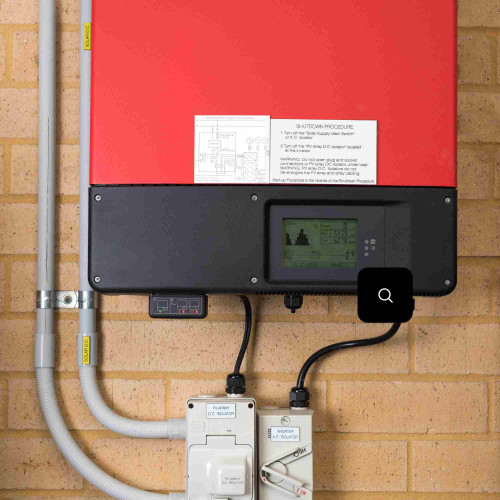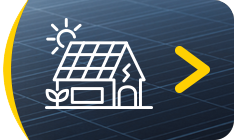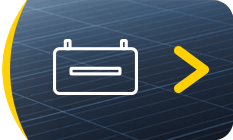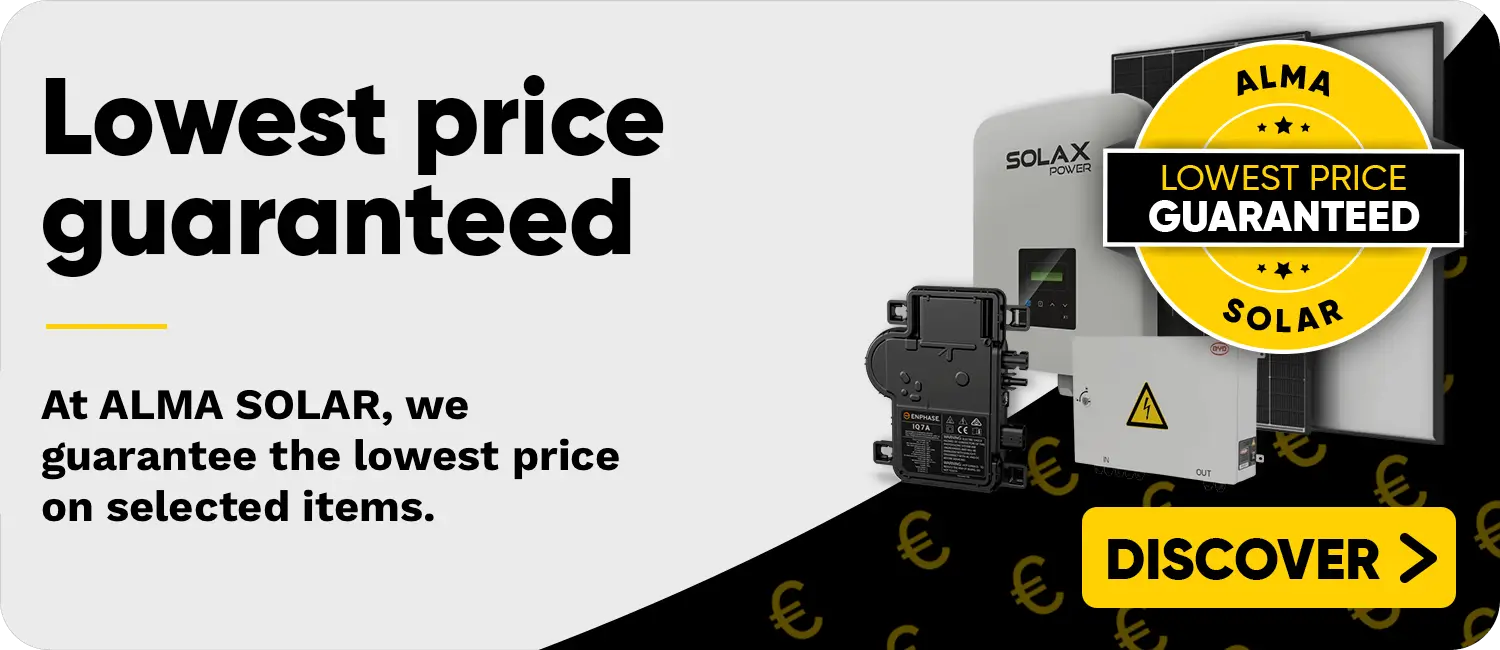- 30 Mar, 2023
- Solar Training , Products , Definitions , Using and installation

Everyone knows what a solar panel is, but we talk much less about the inverter, which is however an essential electronic equipment in a photovoltaic solar panel installation. The inverter is a small box that converts the direct current produced by the solar panels into alternating current, to allow its use by the electrical appliances of your home or simply sent back to the electrical grid. The inverter is therefore crucial to optimize the production of solar energy and ensure the proper functioning of your installation.
At Alma Solar, we have a wide range of inverters: brand, power, efficiency, price ... This article is here to help you choose a photovoltaic inverter adapted to your needs!
I. The different types of solar inverters
There are different types of photovoltaic inverters that differ in their technology and operation.
A single-phase inverter means that your solar inverter will transform the direct current of the solar panels into alternating current on one phase. In the context of the resale of electricity to the electrical network, most of the managers of these networks such as EON, ENEDIS,... limit you to a single-phase injection up to 5kw (6kW for France). Beyond this power, you will have to choose a three-phase solar inverter. The single-phase technology is older and costs less to produce. So at equivalent power, the single-phase inverter will be less expensive.
The second type of inverter is the modified sine wave inverter. Less expensive than the pure sine wave inverter, it is capable of producing a modified sine wave, which looks like a sine wave but is not. However, this technology can cause problems for some electrical devices, especially sensitive electronic equipment. Modified sine wave inverters are recommended for medium-sized installations.
Three-phase injection means that your solar inverter will transform the direct current from the solar panels into alternating current on 3 phases. Above 5kW (6kW in France) the electricity network managers such as EON, SOLAIRDIRECT, ENEDIS,... require that the production of your photovoltaic inverter injects on their network in three phases. This technological solution offers them a greater stability in the management of the networks. Today, manufacturers have optimized the efficiency of three-phase inverters and therefore offer very competitive solutions in three-phase. The three-phase is ideal for installations with high photovoltaic power because you have less loss of yield. Moreover, their production cost decreases year after year. Their selling price is therefore very close to the single-phase.
Finally, the micro-inverter a small electronic box that is installed directly on each solar panel. The micro-inverter converts the direct current produced by each panel into alternating current, thus optimizing the electricity production of each panel. Micro-inverters are recommended for small-scale installations, where flexibility and performance of each panel are essential.
The hybrid inverter with battery is an intelligent inverter that can meet your home's electrical needs by choosing the most economical energy source for you. Indeed, your solar panels installed on your roof, ground or garage are directly connected to this inverter. It is also connected to your batteries. This inverter is finally connected to your electrical panel. That is to say that it is located between your electrical panel and the connection point of your electrical network (EDF for example in France). It is at the crossroads of your 3 energy sources: solar panels, batteries and electrical network.
In summary, the choice of the photovoltaic inverter will depend on the size of your installation, the quality of electric current you want, your budget and the electrical equipment you want to use. It is therefore important to understand the differences between the different types of inverters in order to make the most suitable choice for your needs.
II. CRITERIA FOR CHOOSING A PHOTOVOLTAIC INVERTER
Power of the solar system
The "power of the solar system" refers to the amount of electrical energy that the solar system can generate and transmit. After choosing the type of inverter for your application, you need to choose the power of your inverter. The unit power of your solar panels is given under nominal sunlight and temperature conditions, i.e. 1000W/m2 and 25°C. It is very rare to obtain these weather conditions and therefore to obtain the unit power of the solar panel. Usually you get these conditions in spring. Moreover, the power of your solar panel decreases with time until 80% after 25 years. For these reasons, it is recommended to overload the inverter up to 20%, which means that for a 3000W inverter, you can connect up to 3600W of solar panels.
Conversely, it is strongly discouraged to underload the inverter below 10%, which means that for a 3000W inverter, you should not connect less than 2700W of solar panels. If you do, your solar panels may have a lower voltage than the inverter's input voltage range, which will delay its startup and cause you to lose energy. These two constraints allow you to define an acceptable power range for each inverter. Depending on the total power of your solar panels, you can choose the most suitable solar PV inverter.
Starting voltage
The maximum input voltage is an important parameter to consider when selecting and installing a PV inverter for a solar system. It represents the maximum electrical voltage that a device or electronic component can accept without risk of damage. If the input voltage is higher than the maximum value that the inverter can accept, it can lead to an overload or a failure of the device. Therefore, it is crucial to ensure that the maximum input voltage of the inverter matches the voltage of the solar system in order to optimize the solar energy production of the system while ensuring proper operation of the inverter.
In addition, it is important to ensure that the chosen inverter has a sufficient safety margin to avoid overloading or damage in case of voltage fluctuations or irregularities in the solar energy production.
Conversion efficiency
The conversion efficiency of the photovoltaic inverter measures the efficiency of the inverter in converting the direct current produced by the solar panels into alternating current usable by electrical appliances. A high conversion efficiency means that the inverter is able to convert a greater amount of direct current into alternating current, resulting in higher energy production and increased energy efficiency. This is an important criterion to consider when selecting and installing an inverter for a solar system.
The efficiency of the inverters offered by Alma Solar is clearly indicated on each product sheet, it is between 95% and 98% on average.
Additional features
Today, inverter manufacturers offer data loggers directly connected to the inverter. The internet supervision is a connected solution to monitor the performance of your photovoltaic installation. You can obtain the instantaneous production, power, current and voltage of your solar panels. In order to detect a problem on your solar panels (dirt, shading,...) it is very useful to benefit from it to apply a preventive maintenance.
The biggest inverter manufacturers like SMA, FRONIU ZEVERSOLAR, DELTA, ENPHASE, and others offer this solution for free. You send all your data to their servers. Using your smartphone, you have unlimited access to your photovoltaic production. The settings are very simple. You can also define automatic email and sms alerts according to the inverter's error messages. So you can apply a free preventive maintenance with these free tools. So supervision is very useful, even essential.
Price
The price of a solar inverter depends on its power and its characteristics.
Usuallay, it is gonna be between 100 and 200€ for a micro-inverter (but you need one per solar panel) and from 500 to 5000€ for a hydrid inverter.
The guarantee of the products is from 5 to 10 years depending on the brand.
III. How to install the photovoltaic inverter
Location of the inverter
It is generally recommended not to exceed a maximum distance of 15 meters between the solar panel and the inverter, in order to reduce line losses and avoid overheating of cables. Ideally, the inverter is placed in an easily accessible, clean and ventilated room such as a garage or cellar to maximize the life of the electronic components.
Wiring the inverter
For each product offered on our website, you have access to the technical data sheet and the detailed pdf user manual in the Installation section.
We hope this article will help you make the right choice to supply your home with energy and guarantee your self-consumption. If you have any doubts, Alma Solar is here to help you with your installation. Make sure you choose the right inverter with our online configurator.











